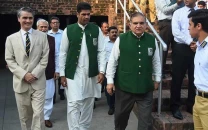
So dominant are the Indians in this school competition that they have been winners eight times in the last 10 years. If anything, this trend is becoming even more pronounced. Indians took the first spot in each of the last five years and all three top places in this year’s contest that finished on May 31.
What explains this total dominance of Indians, who are only one per cent of America’s population? It is hardly the case that we speak or write English better than Europeans or Americans. How are Indians so good with difficult words?
The online magazine Slate explored this subject in 2010 in their “Explainer” column. The writer concluded that the effort of an organisation called the North South Foundation was responsible.
This body of expatriate Indians conducted local spelling and other contests that made Indian children better. These contests were very competitive, therefore, giving Indians both experience and an edge when they took the national stage. The Slate writer doesn’t explore why it is that Indians are so enthusiastic about this particular contest in the first place.
The fact is that it plays to their strength, which is learning by rote. Memorising tracts is and has always been the Indian way of acquiring knowledge. It is also the way in which learning is examined in Indian schools. Answers to questions about history, geography and even science that aligned word for word with what the textbook said got you full marks when I was a child, and this hasn’t changed.
Indians have a word in each of their languages for this sort of learning. It is called ratta in Hindi, for instance, and gokh in Gujarati. It refers to reading, repeatedly reciting, and thereby, memorising whole pages of prose.
This may not be a good way of learning, if it is learning at all, but this has always been the case in India. Hindus developed a complex system of memorising and reciting the entire Rig Veda so that it would not be lost in the period before literacy.
Even today, Indian adults consider it an act of learning to be able to put on display their ability to be mug up. Stephen Cohen wrote about this in his book India: Emerging power. He remarked that there was a difference in styles when Indian and American diplomats negotiated. Indians took pride in recounting the minutiae of events in the past, dates and background and that sort of thing. This was done, Cohen felt, for no reason other than to show that there was mastery over the subject. Americans, on the other hand, were focussed only on the issue at hand.
It is true that all students, whether Indian or not, must memorise to be able to do well in America’s National Spelling Bee. A Washington Post report before the finals quoted one American child’s mother saying that her son had studied for 8,000 hours in preparation.
But it is also true that because of their legacy and culture of doing this, Indian kids have an advantage. Our middle class values of parental supervision of studies makes sure more kids spend those thousands of hours learning words.
Indian newspapers take great pride when these values show results, as they did again on June 2 when Snigdha Nandipati won, beating Stuti Mishra and Arvind Mahankali.
Snigdha’s father has trained her since she was four, and used 30,000 flash cards to help her memorise tough words — words like “guetapens” and “chionablepsia” that she is unlikely to encounter again in life.
This advantage Indians have of being able to find the time and motivation to commit things to memory is not particularly useful outside of things like spelling contests. It is of no use in thinking about problems and solutions. I would say it is the reason why the output of our colleges and universities is low on quality (India’s software body NASSCOM says nine out of 10 Indian engineering graduates who apply to one of the big four software firms are rejected as being unemployable).
So while India’s dominance of the National Spelling Bee puts on display its middle class values, it also showcases the problems of its system of education.
Published in The Express Tribune, June 3rd, 2012.















COMMENTS
Comments are moderated and generally will be posted if they are on-topic and not abusive.
For more information, please see our Comments FAQ